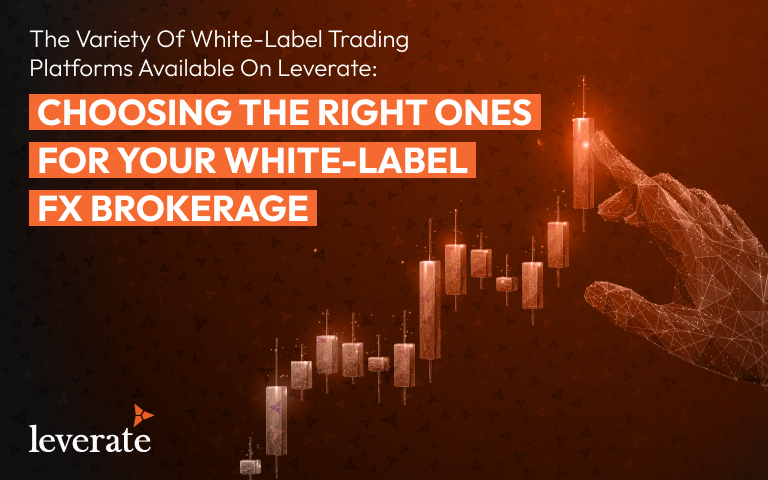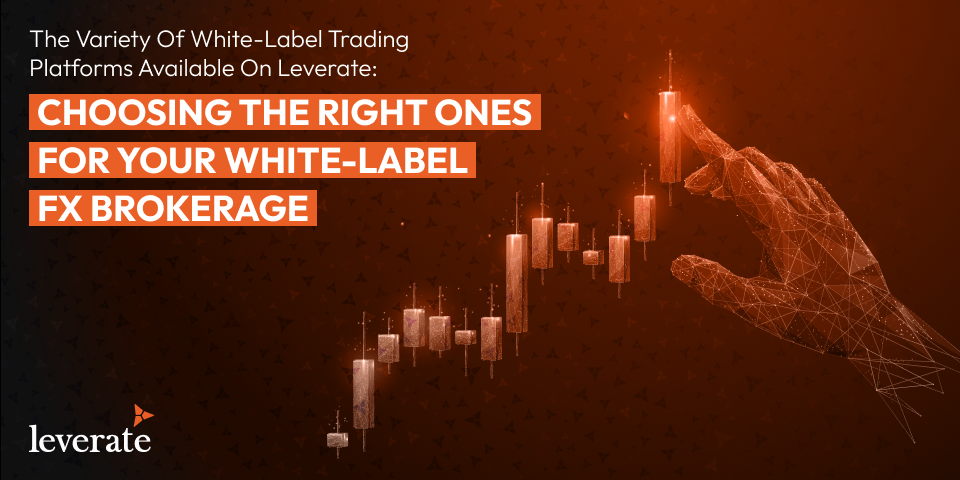The Variety of White-Label Trading Platforms Available on Leverate: Choosing the Right Ones for your White-Label FX Brokerage
Anyone looking to start up as a white-label forex broker has myriad decisions to make: Do we go with a full turnkey solution? Or do we build it ourselves with selected modules and partners? Do we find our own forex liquidity providers? What trading platform should we choose? The post The Variety of White-Label Trading Platforms Available on Leverate: Choosing the Right Ones for your White-Label FX Brokerage appeared first on Leverate.


Anyone looking to start up as a white-label forex broker has myriad decisions to make: Do we go with a full turnkey solution? Or do we build it ourselves with selected modules and partners? Do we find our own forex liquidity providers? What trading platform should we choose?
The truth is, that many brokers will select more than one trading platform, either licensed directly from a developer or under a white-label agreement. The key to deciding which platform to use will be dictated, not by the aspiring broker’s personal preferences, but by the client base they wish to target.
For example, the bulk of existing retail forex traders are still using MT4 from MetaQuotes as it is still supported by brokers, large and small, all over the world. MetaTrader4 (MT4) was launched in 2005 and is a reasonably suitable trading platform for beginner, intermediate and expert traders alike. It also has a proprietary language for coding robots called Expert Advisors (EAs) which can open and close trades based on predetermined trading parameters.
However, as the years passed, and the markets, brokers and traders became more demanding and sophisticated, MetaQuotes could not accommodate any more requirements for the platform, so they introduced MT5 in 2010. In many ways, MT5 is very similar to MT4 in its appearance and user interface so a retail trader can make the switch quite easily. MT5 also offers the FX Broker more flexibility in terms of control and the quantity of assets on offer to its clients.
Unfortunately, there is no upward compatibility between EAs programmed for MT4 and those for MT5. The two platforms are built on completely different languages and EA traders and programmers either had to rewrite the code for their robots or seek out conversion programs. This is often the rationale for many brokers offering both platforms; MT4 and MT5.
Taking this requirement for flexibility and much feedback from brokers, Leverate developed SiRiX for the white-label broker in 2013. Brokers were finding that MT4 might be too complicated for newer traders and a simpler solution was required. Also, a key benefit of SiRiX over MT4 is that traders can calculate their position size in SiRiX thereby offering more in terms of risk management.
Retail traders often find that the SiRiX mobile version is easier to use than the MT4 and MT5 equivalent platforms. Another huge advantage for the white-label FX Broker is the SiRiX offering of copy trading. Very often, brokers find that an aspiring retail trader has made the investment in signing up and depositing to an account but won’t make the investment in time to learn the platform or how to trade. This is where copy-trading fits in perfectly with the broker’s stable of offerings to its clients.
So, depending on the client base, today’s white-label broker can offer one or more trading platforms to its clientele. The SiRiX platform is ideally suited to newer traders, copy traders and mobile traders while more advanced traders with existing trading robots may want to stick with MT4. MT5, on the other hand, offers a serious upgrade to intermediate and advanced traders with enhanced order entry options and expanded assets to trade.
For you, the aspiring white-label FX broker, the choice is yours.
The post The Variety of White-Label Trading Platforms Available on Leverate: Choosing the Right Ones for your White-Label FX Brokerage appeared first on Leverate.







